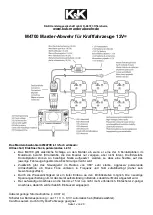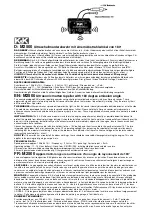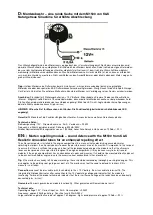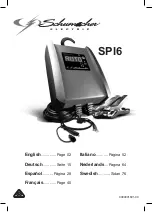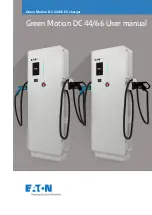
120
Driving and operation
Coup ling socket loa d
The c oupling socket load is the load
exerted by the carav an/trailer on the
coupling ball. It can b e varied by changing
the w eight distribution when loa ding the
carava n/trailer.
The ma ximum permissible coup ling socket
load (50 kg) is specified on the towing
equipm ent identification plate and in the
vehic le documents. Alw ays aim for the
maximum load, especia lly in the ca se of
heav y carav ans/trailers. The c oupling
soc ket load should nev er fall below 25 kg.
When mea suring the coup ling socket load,
mak e sure that the drawbar of the loa ded
carava n/trailer is at the sa me height as it
will be when the caravan/trailer is coupled
with the towing vehicle load ed. Particularly
important for caravans/trailers w ith
tandem axle.
Rear axle load during tow ing
The p ermissible axle loads must not be
exceeded.
Dr iving characteristics, towing tips
In the case of caravans/trailers with brakes,
attach break away stopping ca ble to eye.
Before a tta ching the carava n/trailer,
lubricate the ball of the ca ra van/trailer
tow ing devic e. H ow ever, do not lubricate
the ball if a stab iliser, which acts on the
coupling b all, is being used to damp
hunting.
Check caravan/trailer lighting before
starting to drive. The fog tail lights on the
vehicle are deactiv ated w hen towing a
caravan or trailer.
Caravans/trailers with LED turn signa ls
require a p rov ision that make bulb
replacem ent as with stand ard bulbs
possible.
Handling is greatly influenced by the
loading of the caravan/tra iler. Loads
should therefore b e sec ured so that they
cannot slip and be placed in the centre of
the caravan/trailer if possible, i.e. ab ov e
the axle.
In the case of trailers with low driv ing
stability, d o not exceed a speed of
50 mp h (80 km/h); the use of a friction-typ e
stabiliser is hig hly recomm ended.
If the caravan/trailer starts to sway, drive
more slowly, do not attem pt to correct the
steering and brake sha rp ly if necessary.
If it is necessary to apply the brak es fully,
depress the brak e pedal a s hard as
possible.
Remem ber that the braking d istance for
vehicles towing carava ns/trailers with and
without brake is always greater than that
for vehic les not tow ing a carav an/trailer.
When driving downhill, d riv e in the sa me
gear as if driving uphill and d riv e at a
similar speed.
Adjust tyre pressure to the value specified
for full load
3
115,
3
179.
Summary of Contents for 2013 Combo
Page 4: ......
Page 12: ...8 In Brief...


































